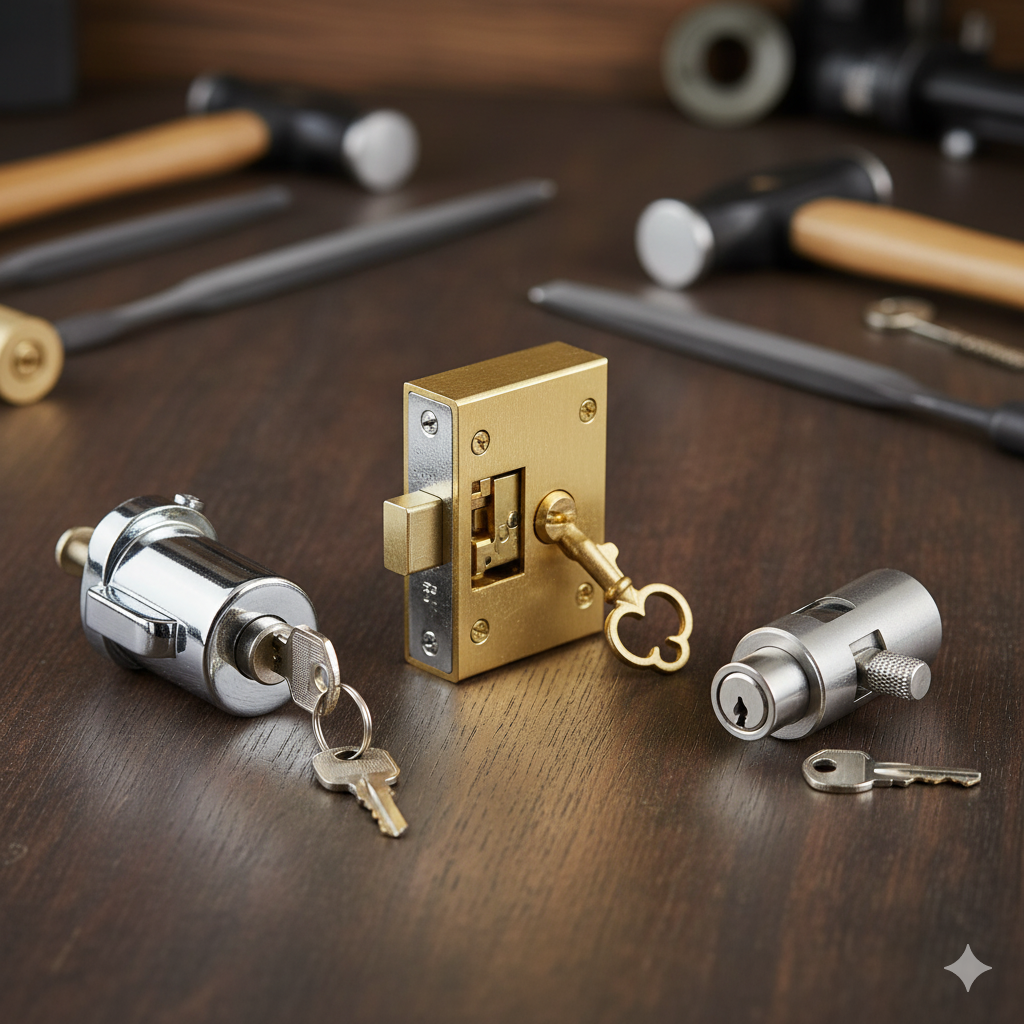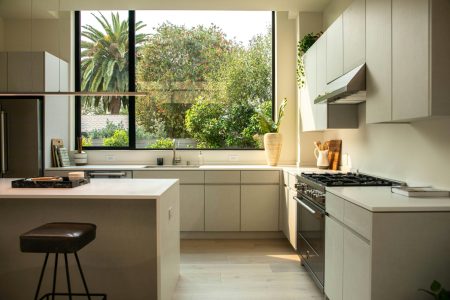Have you ever tried to describe a lock to a tradesperson and ended up feeling a bit lost? You’re not alone. With so many different types of door locks, it’s easy to get confused. But understanding the basics can make a world of difference when it comes to upgrading your home’s security.
We’ll break down the difference between locks by explaining the three most common types found on UK doors: Mortice, Yale, and Cylinder.
1. Mortice locks: The lock in the door
A mortice lock is a lock that is fitted inside a “pocket” or mortice, which is cut into the edge of a door. This makes it very secure as the main locking mechanism is completely concealed within the door itself. You’ll usually find these on older, traditional wooden doors.
- How it works: You insert a mortice lock key (often a solid, chunky key) to turn a series of internal levers that move the locking bolt in and out of the door frame.
- Common uses: External and internal wooden doors.
- Security: Mortice locks are known for their high security. For an insurance-approved lock, look for one that is 5-lever and features the British Standard Kitemark (BS3621) on the faceplate.
2. Yale locks: The lock on the door
The term “Yale lock” is often used as a generic name for a “night latch.” While Yale is a well-known brand, many companies make this type of lock. A night latch is mounted on the inner surface of the door and automatically locks when the door closes.
- How it works: It uses a spring-loaded latch that you can open from the outside with a key and from the inside with a knob. Some yale lock types also feature an auto-deadlocking mechanism for extra security.
- Common uses: As a secondary lock on front doors, often alongside a mortice lock.
- Security: A standard night latch on its own may not meet insurance requirements. Always check for a British Standard model (BS3621) if it’s the only lock on the door.
3. Cylinder locks: The heart of the lock
A cylinder lock, or Euro cylinder, is the barrel-shaped part of a lock that your key goes into. It’s the component that you might replace on its own, without changing the entire locking mechanism. You can find cylinder locks used with both mortice locks and multi-point locking systems on uPVC and composite doors.
- What is a cylinder lock? It’s a self-contained unit that houses the keyway and pin mechanism. It allows a door to be locked and unlocked from both sides.
- Security: In recent years, cylinder locks have become the target of lock snapping. To protect your home, always choose a high-security cylinder that is anti-snap, anti-pick, and anti-drill. Look for a 3-star rating on the lock itself.
Mortice lock vs yale Lock vs cylinder: A simple comparison
| Lock type | Mortice Lock | Yale Lock (Night Latch) | Cylinder Lock |
| Installation | Fitted inside the door | Mounted on the door’s surface | Inserted into the lock body or multi-point system |
| Key Type | Often a solid, skeleton-like key | Flat, serrated key | Flat, serrated key |
| Best For | Primary lock on external doors | Secondary security on external doors | uPVC and composite doors, or as part of a mortice lock |
| Security | Highly secure, especially 5-lever BS3621 models | Convenient but often less secure on its own | Highly secure with an anti-snap rating |
When to call a professional locksmith
This quick guide is a great start, but when it comes to your home’s security, professional advice is invaluable. If you’re considering an upgrade, or you’re unsure if your locks meet your insurance requirements, it’s always best to consult a trusted locksmith.
They can assess your home’s specific needs, recommend the best types of door locks, and ensure the installation is done correctly for maximum security.
Ready to get started? With Rated People, you have the power to get it done. Find a trusted, local tradesperson today.
Read the full article here







